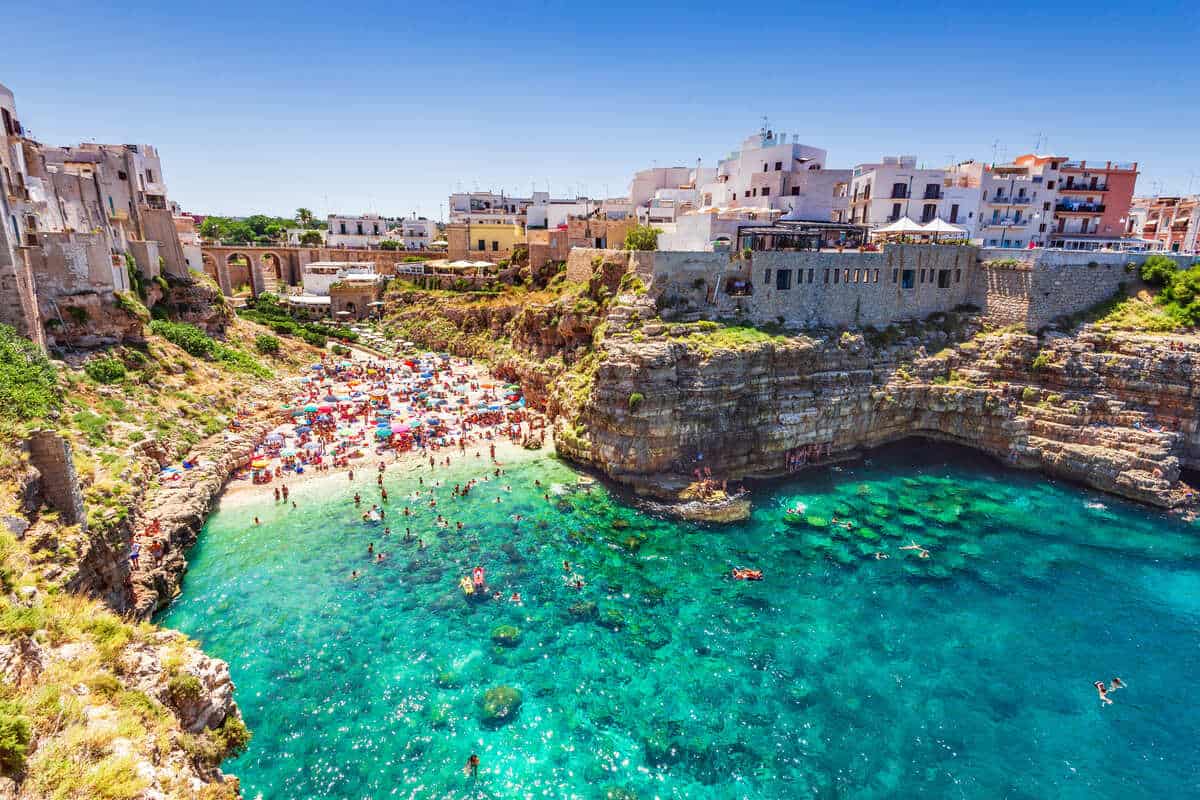Italy is one of the most popular destinations in Europe. Home to some of the continent’s most famous landmarks, including the Colosseum, the Leaning Tower of Pisa, and Venice’s picturesque canals, it draws in tens of millions of visitors every year.
Unsurprisingly, it has been battling overtourism for decades now, and while a majority of the country has succumbed to the concerning trend, with some cities going as far as threatening to introduce a ticketing system, other lesser-known spots are still not as badly affected.
That is the case with Puglia, an underrated region in Italy that is not as crowded as the Amalfi Coast and where consumer prices are not as inflated:
Welcome To Puglia

If traveling to Italy is non-negotiable to you, irrespective of price surges and the surging crowds, but you’re not exactly keen on joining the long lines of tourists for that Instagrammable Colosseum-shaped ice lolly in Rome, then maybe you should consider spending more time in Puglia.
If you’re not familiar with Italy’s boot-like map, Puglia sits right on the heel, or the Southeastern peninsula of the country, bounded by the Adriatic Sea.
Looking over the ocean on a clear day from certain points, you may even get a peek at Croatia’s Dalmatian Coast.

The sweeping ocean panorama is not the only thing that makes Puglia great, though. Home to about four million people, it is one of the most unique and certainly fascinating historical regions of Italy, famous for its olive oil production, Adriatic beaches, and ancient towns.
One Of Italy’s Most Fascinating Historical Regions
Unlike other towns in Italy and their traditional pastel colors, Puglia’s are normally whitewashed, and they can be much more quaint.
There are beautiful bucolic settlements like Alberobello, famous for its UNESCO-listed ‘Trulli’ stone huts and cobbled streets, comparatively less crowded than Positano, Sorrento, and the like, especially in the fall, and Lecce, a Baroque gem jam-packed with much older Roman ruins, including an amphitheater.

Polignano a Mare is also a popular destination, best known for its white-pebble Lama Monachile beach, nestled between two cliffs upon which centuries-old houses are perched and connected at a narrow point by a Roman-era bridge, still in use today.
The beach is particularly scenic and certainly one of Puglia’s most famous postcards, with waters that are bright blue and that stay warm long after summer is over.
The lesser-known Gallipoli is well worth a visit, as well, what with its offshore Old Town, sitting on an island, and imposing Gallipoli Castle.
Of course, we shouldn’t forget Bari, the regional capital and largest city, with a metropolitan population of over a million residents and a surprisingly vast historic center dotted with medieval structures.

Alongside Bergamo, it is a seriously underrated Italian city break.
Using Bari as a base to explore Puglia, you should expect to find a myriad of traditional Italian restaurants and world-class museums, as well as the Adriatic’s liveliest nightlife.
There is a never-ending list of world wonders and beautiful sights here, and you might need more than a single week to tick off all of the main landmarks.
Italians Themselves Prefer Puglia Over Amalfi Or Liguria

It’s no wonder Puglia was the favorite destination of Italians themselves in 2022, and if there’s one thing we’ve learned from this post-pandemic scene, where mass tourism is back with a vengeance, is that we should follow in the steps of locals, not go where other tourists are going.
Natives tend to favor destinations that are not yet completely overrun with foreigners and where their traditions and customs are maintained, and the fact that Puglia is surging in popularity with Italians is a strong indicator it has not yet been lost to the Instagram hordes.
That’s not to say it is not crowded.

Regrettably, nowhere in Italy is not crowded these days, but Italy’s favoritism for Puglia could mean it has not been converted into a mere development zone with less-than-stellar restaurant options and polished towns serving as mere tourist playgrounds.
According to Puglia Tips, the region is the number one in Italy for seawater quality, having reasserted its status as a national leader in ‘water healthiness’ last year.
Puglia Is Somewhat Cheaper
Don’t Expect Eastern European Prices, Though

Though Puglia is certainly not Albania or Montenegro, it can be relatively more affordable to visit than other parts of Italy, with Budget Your Trip noting tourists should plan on spending, on average, $123 per day vacationing in Bari.
In Florence, the average cost of a vacation is a relatively higher $168 per day, toppled by Milan’s $181, Rome’s $185, all surpassed by Venice’s shocking median cost of $250 per day.
Puglia may still be somewhat expensive, at least by Eastern European standards, but it can be a fairly cheap vacation within Italy, particularly in the fall, when prices go down along with visitor numbers.

Puglia Will Stay Warm This Fall
In September, the maximum daily temperature in Puglia averages 26.2 degrees Celsius, or 79.16 Fahrenheit, with lows of 17.°C or 62.78°F in the evenings, making it the perfect off-season Transatlantic getaway.
It’s not too hot you can’t stand to be outside for longer than two hours, like in June, but not chilly enough so you need to pack winter coats.
Find more hidden gems of Italy, and start planning your fall trip here.

